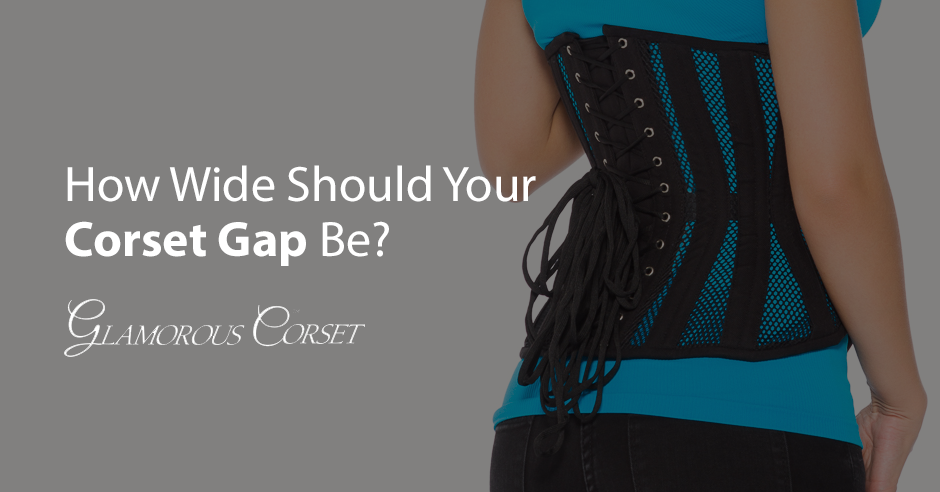Blog
How Wide Should Your Corset Gap Be? (Lacing)
If you’re familiar with corsetry, you know the front is secured with metal busks while the back is laced up, allowing you some wiggle room to tighten the garment as you see fit. You might think you’re supposed to pull the laces until the two back edges of the corset touch, but this generally isn’t considered ideal.
In fact, it’s better for the garment and your waist training regimen to start out with a gap in the back so you have room to tighten as you progress toward a smaller waist line. Otherwise you’d have to downsize corsets frequently as overlap began to occur, and this could strain even an ample budget.
The question, then, is how wide your corset gap should be, on average. Unfortunately, the answer is not as simple as a one-size-fits-all number. However, there are guidelines that can give you a starting point, after which you can personalize your waist training journey.
Creating a Uniform Gap
Generally speaking, the first rule of lacing a corset is maintaining a uniform gap up the length of the spine if possible, so that the gap is the same width at the top, middle, and bottom, regardless of how wide or narrow that may be. This is why it’s best to situate the laces in the middle so you don’t accidentally pull too tightly at the top or bottom.
You may think it’s best to pull tighter in the middle to accentuate your waist, like so: )( However, steel boned corsets are structurally designed to nip in at the waist and flare toward the top and bottom to create an hourglass shape, so you needn’t pull laces tighter in the middle to achieve this look. Doing so could actually damage the integrity of the garment.
Standard Gaps by Corset Size
Now that you know how to properly align the gap, you need to know how wide it should be. For off-the-rack (OTR) models, a gap of 2-3 inches is generally recommended. Some garments feature a back panel that will cover this distance so you don’t have exposed skin under laces. Other corsets feature no panel for wearers that prefer to show some skin.
Of course, this guideline for gaps will naturally vary by the size of the corset and your body. For example, corsets designed for waist sizes over 30 inches can often accommodate a slightly larger gap of 3-4 inches. This is because a larger girth often allows for greater compression and a wider gap will be more proportionally pleasing, as well as a bit more flexible. Smaller waistlines, such as those under 20 inches, may work better with a smaller gap of, say, 1-2 inches.
Lacing for Comfort and Fit
Now that you have the guidelines in mind, remember that your body is unique, and unless you get a custom corset, you’ll have to experiment a bit to create the perfect fit. You may end up liking the look of a closed corset (i.e. one where there is virtually no back gap). Or you might feel more comfortable with a smaller or larger gap than recommended. Corset gap width is not absolute, so find what works for you.
Stay up-to-date with weekly blog posts, waist training tips, and the chance to win one of our monthly corset giveaways, like us on Facebook & subscribe to our mailing list today! Want to find the perfect steel boned corset? Shop some of our favorites: underbust corsets, overbust corsets, corset dresses.

My name is Rachel, I am the owner of Glamorous Corset, a small business founded by me in 2010. Back In 2005, I was in a car accident that left me with a herniated disk. Much to my surprise I learned steel boned corsets were beneficial to several medical injuries including mine. I was always intrigued with corsetry, their history and their beautiful aesthetic. I love sharing knowledge about corsets, educating my wonderful readers and breaking the negative stigma related to corsetry. In combination with my years of research and personal experience I hope my articles are useful and can help anyone who has struggled with some of the same things I have. More about me…


